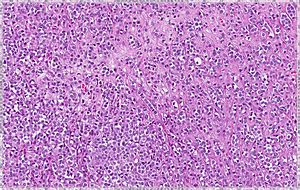Stanford University School of Medicine researchers have identified a compound that attacks the Achilles’ heel of certain cancer cells by depriving them of their energy source, the sugar glucose.
Cancer chemotherapy can be a rough ride, in part because most of these drugs don’t distinguish between what’s cancerous and what’s not. The chemicals attack all rapidly dividing cells, from cancer cells, to blood cells and the cells that make hair. However, drugs that target a biological phenomenon only found in cancer cells, such as the compound recently discovered by Stanford researchers, could efficiently fight the disease with minimal side effects. The finding will be published Aug. 3 in Science Translational Medicine.
“This study demonstrates an approach for selectively inhibiting the ability of cancer cells to take up glucose, which is a pretty powerful way of killing those cells,” said senior study author Amato Giaccia, PhD, professor and director of radiation oncology.
The researchers focused their study on the most common form of kidney cancer in adults, renal cell carcinomas, which constitute almost 2 percent of all cancers in the United States, according to the Centers for Disease Control and Prevention. The disease is resistant to typical chemotherapies, and patients often have to have the affected kidney removed. Nearly 90 percent of these cancers carry a specific genetic mutation that leads to uncontrolled cell growth.
“Most normal tissues in the body don’t possess this mutation, so a drug that targets this vulnerability should be very specific for cancer cells,” said Giaccia, who is also a member of the Stanford Cancer Institute.
With the help of the Stanford High-Throughput Bioscience Center, the team tested a library of 64,000 synthetic chemical compounds on tumor cells with that mutation and then looked for signs of cell death.
The screen produced two candidate cancer drugs, one reported by Giaccia in 2008, STF-62247, which is now in preclinical testing. The other, STF-31, described in the new study, kills cancer cells in a different way, so a combination of the two drugs would allow a multipronged attack. “Or, if a cancer becomes resistant to one compound, you have another option,” said Denise Chan, PhD, former postdoctoral researcher at Stanford and co-first author of the new study.
Most renal cell carcinomas produce energy through a biochemical process called aerobic glycolysis, one that healthy cells don’t typically require. The energy-making process is dependent on the cells’ ability to take up glucose from their environment. “The cells that we are targeting are highly dependent on glucose transport for energy production,” said Chan, who is now an assistant professor at UC-San Francisco. “This compound stops the cells from transporting glucose, so it starves them.”
Renal cell carcinomas aren’t the only cancer cells that are glucose gluttons. Many cancers turn up their rate of glucose import, a fact used by doctors to monitor cancers in live patients. Doctors can inject a radioactively labeled glucose and follow its uptake in the body with PET scanning. Using a similarly labeled glucose, the team found that STF-31 reduced the amount of glucose the cancer cells could ingest, thus robbing them of their energy source.









